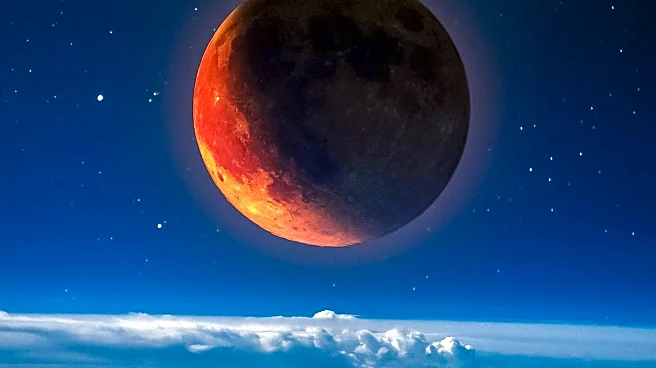What's Happening?
A total lunar eclipse, coinciding with September's Corn Moon, will create a dramatic blood moon visible across Europe, Asia, Africa, and Australia on September 7, 2025. However, this celestial event will not
be visible in the United States. The Corn Moon, reaching peak illumination at 2:09 p.m. Eastern Time, is culturally significant as a harvest marker. The blood moon's red hue results from Earth's atmosphere scattering blue light, allowing red wavelengths to illuminate the moon during the 82-minute eclipse. This event is part of a busy lunar calendar, with the next blood moon visible in the U.S. expected in 2026.
Why It's Important?
The blood moon and Corn Moon hold cultural and scientific significance. For astronomers, these events provide insights into Earth's atmosphere, revealing details about dust and clouds. Culturally, the Corn Moon is a time for reflection and marks the transition from summer to fall. The event highlights the global nature of celestial phenomena, with different regions experiencing unique views. The absence of visibility in the U.S. underscores the geographical limitations of such events, emphasizing the need for global collaboration in astronomical observations.
What's Next?
The next blood moon visible from the U.S. will occur on March 2, 2026, offering a complete view along the West Coast. Meanwhile, a partial solar eclipse will occur on September 21, 2025, visible in parts of the Southern Hemisphere. These events continue to engage both the scientific community and the public, fostering interest in astronomy and the natural world.
Beyond the Headlines
The Corn Moon's cultural significance extends beyond its visual spectacle. It serves as a reminder of the deep connection between natural cycles and human traditions. The event also highlights the importance of preserving dark skies for future generations to enjoy such celestial wonders.













